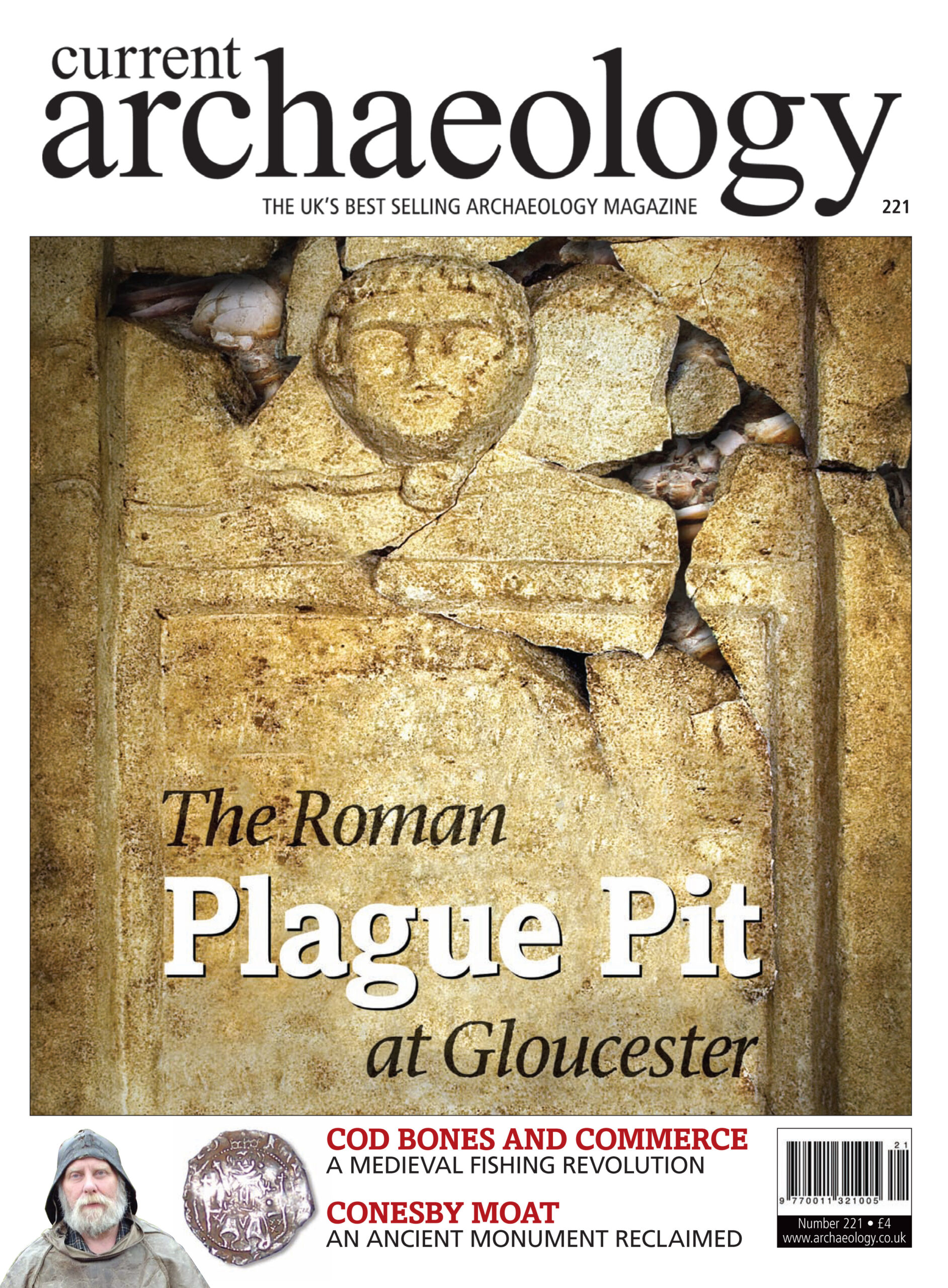This month, Current Archaeology is all over the map (literally!), covering a broad range of topics and time periods from the length and breadth of Britain. Did the humble cod spark a commercial revolution in medieval England? Can a lost moat be rescued from beneath metre-deep slag? Is there evidence of the Antonine plague in Gloucester? Find the answers in this month’s exciting features. Additionally, we have the compelling story of one of Roman Britain’s largest votive hoards, and a report on an 800-year old abbey facing ruin after centuries of neglect. Editor-in-chief Andrew Selkirk closes the issue in his Last Word with an account of his recent trip to the excavations at Brading Roman Villa on the Isle of Wight. Enjoy!
ROMAN BRITIAN’S GREAT PLAGUE?
What started as a routine rescue dig on a Roman cemetery site in Gloucester became something else altogether: the discovery of a death-pit, with at least 91 tangled skeletons tipped into a metre deep hole. This dig may hold the first evidence that Britain, more than a thousand years before the Black Death, was struck by a Great Plague from the Continent.
COD BONES AND COMMERCE
Sea fishing took off in the years around AD 1000. Why did this happen? Where were the fishing grounds? And was it part of a wider commercial revolution? New international Cambridge-led research has devised a scientific technique that uses cod bones to identify where the fish eaten by our medieval ancestors came from ‚ with startling results.
LOST AND FOUND: THE TALE OF CONESBY MOAT
The moated site at Conesby disappeared in the 1920s beneath the slag heaps of the Normanby Park steel works. Time moved on and the works closed, leaving behind only the slag heaps, which were moved, and the site levelled. But what of the moat? It had been covered with slag ‚ could anything have survived?
ST RADEGUND’S ABBEU
At the end of the 12th century, a group of French monks founded an abbey on a windswept plateau just outside Dover. Much of it is still there ‚ but in serious danger of decay and collapse. Keith Parfitt brings us an account of the Dover Archaeological Group’s interest in the site.
PIERCEBRIDGE VOTIVES
When two divers went looking for ancient bridge foundations at Piercebridge, they found something much more exciting than bridge footings in the murk and mud at the bottom of the River Tees. British Museum researcher Philippa Walton tells the exciting story of the objects from one of Britain’s greatest Roman votive hoards.
MARTIN HENIG RETIRES
Martin Henig looks back at his 40 year career and shares some words of wisdom, as he leaves archaeology to train for the ordained ministry.
LAST WORD
Brading Roman Villa
ODD SOCS
The Folk Camps Society

